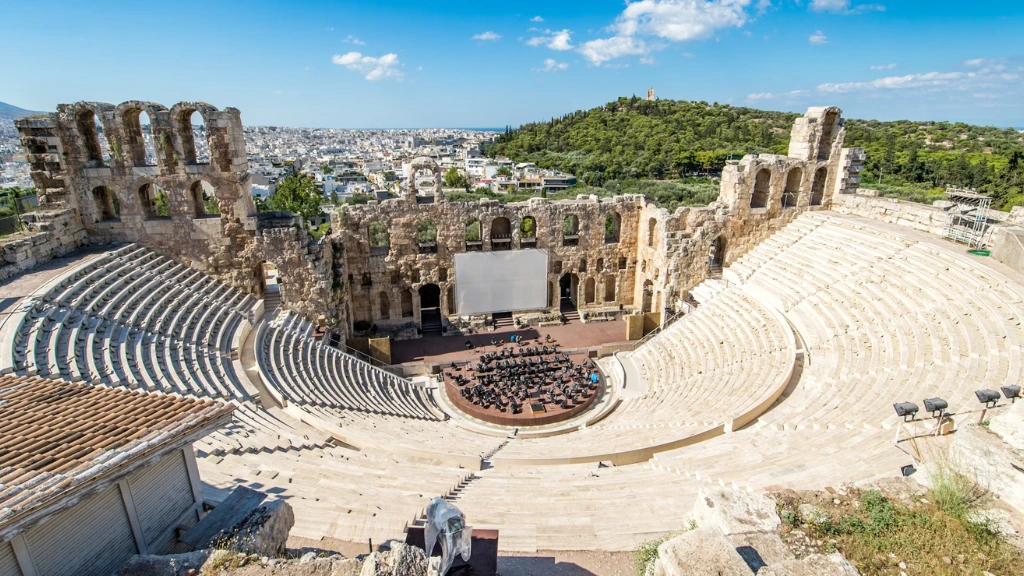The Acropolis in Athens is one of the most iconic ancient sites in the world. With its towering temples, rich history, and breathtaking views, it attracts millions each year.
For a first-time visitor, knowing what to expect can make all the difference. This guide offers insights into the history, main sights, tips for visiting, and everything you need to make your trip unforgettable.
You May Also Like: Discover Armenia: Essential Guide for New Visitors
The History of the Acropolis
The Acropolis stands as a symbol of ancient Greek culture and achievement. Built atop a hill, this ancient citadel has withstood wars, natural disasters, and the test of time. Most of the structures were built in the 5th century BC during the Golden Age of Athens under the statesman Pericles. The Acropolis houses several monuments, with the Parthenon being the most famous.
The Acropolis was designed to honor Athena, the goddess of wisdom and warfare, who was considered Athens’ patron deity. Over time, it became a center of art, philosophy, and political power. The architecture of the Acropolis showcases the genius of ancient Greek engineering, and each structure tells its own story.
Must-See Sights at the Acropolis
1. The Parthenon
The Parthenon is the crown jewel of the Acropolis. Built between 447 and 432 BC, it’s a remarkable example of Doric architecture. The temple was dedicated to Athena and once housed a massive statue of her, crafted by the sculptor Phidias. Even in its ruined state, the Parthenon remains awe-inspiring.
2. The Erechtheion
The Erechtheion is a unique temple known for its Caryatids—sculpted female figures that serve as columns. This temple was built to honor both Athena and Poseidon and showcases the complexity of ancient Greek religious beliefs.
3. The Temple of Athena Nike
This small but elegant temple stands on the edge of the Acropolis. Dedicated to Athena as the goddess of victory, it offers panoramic views over the city and is celebrated for its Ionic columns and detailed frieze.
4. Propylaea
The Propylaea serves as the grand entrance to the Acropolis. This monumental gateway, built from marble, adds to the sense of awe as you step onto the sacred grounds. It’s also an incredible spot for photos with Athens as your backdrop.
5. Odeon of Herodes Atticus
Although technically not part of the ancient Acropolis, this Roman theater on the southern slope is still a must-see. Built in 161 AD, it has been restored and hosts performances during the Athens and Epidaurus Festival.
Tips for Visiting the Acropolis
1. Arrive Early or Late
To avoid crowds and the intense midday heat, try visiting the Acropolis early in the morning or late in the afternoon. You’ll have more space to explore, and the lighting makes for excellent photos.
2. Wear Comfortable Shoes
The ground around the Acropolis is uneven, with slippery marble paths. Wearing supportive, non-slip shoes will make your visit safer and more enjoyable.
3. Stay Hydrated
Athens can be hot, especially in summer. Bring water with you, as there aren’t many places to buy refreshments once you’re inside.
4. Consider a Guided Tour
A tour guide can provide context for what you’re seeing, making the ruins come alive with stories of ancient Athens. Many tour options are available, including private guides and group tours.
5. Visit the Acropolis Museum
The Acropolis Museum, located at the foot of the Acropolis, is the perfect complement to your visit. It houses artifacts from the Acropolis and offers insight into the lives of ancient Athenians.
6. Check the Weather
Since the Acropolis is exposed to the elements, bad weather can impact your visit. If it’s rainy or windy, consider waiting for better weather.
How to Get to the Acropolis
The Acropolis is easily accessible from most parts of Athens. The most convenient way to reach it is by using the Athens Metro and getting off at the Acropoli station. From there, it’s a short uphill walk. For those staying near Plaka or Monastiraki, the Acropolis is within walking distance.
If you prefer a more scenic approach, try entering through the Dionysiou Areopagitou pedestrian street, which offers views of other ancient sites along the way.
Best Time of Year to Visit the Acropolis
Spring (April to June) and fall (September to October) are the best times to visit. The weather is pleasant, and the crowds are smaller compared to the peak summer months. However, if you’re visiting in summer, plan to go early in the day.
Acropolis Etiquette and Conservation Efforts
The Acropolis is a UNESCO World Heritage Site, and visitors are expected to treat it with respect. Follow all signs, avoid touching the monuments, and dispose of any trash in designated areas. Photos are generally allowed, but drones are prohibited.
Preservation is ongoing, with extensive restoration projects aimed at protecting the structures from pollution, weather, and natural aging. Visitors can support these efforts by being mindful of the fragile surroundings.
Nearby Attractions in Athens
1. The Ancient Agora
Once the heart of public life in Athens, the Agora was the setting for political debates and philosophical discussions. It’s now an archaeological site with fascinating ruins and the Temple of Hephaestus.
2. The Plaka Neighborhood
Wander through Plaka, a charming area filled with shops, cafes, and traditional tavernas. This is the perfect place to relax after exploring the Acropolis.
3. The National Archaeological Museum
This museum houses some of Greece’s most valuable artifacts, including ancient sculptures, jewelry, and pottery. It’s a great follow-up to your Acropolis visit for a deeper dive into Greek history.
Final Thoughts on Visiting the Acropolis
Visiting the Acropolis is an unforgettable experience, providing a glimpse into the grandeur of ancient Greece. From the awe-inspiring Parthenon to the intricate Erechtheion, the Acropolis offers history, beauty, and inspiration.
With proper planning and a sense of curiosity, your visit to the Acropolis can be the highlight of any trip to Athens.










